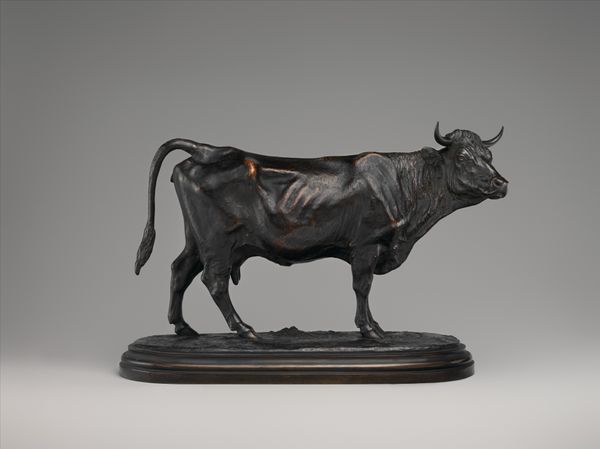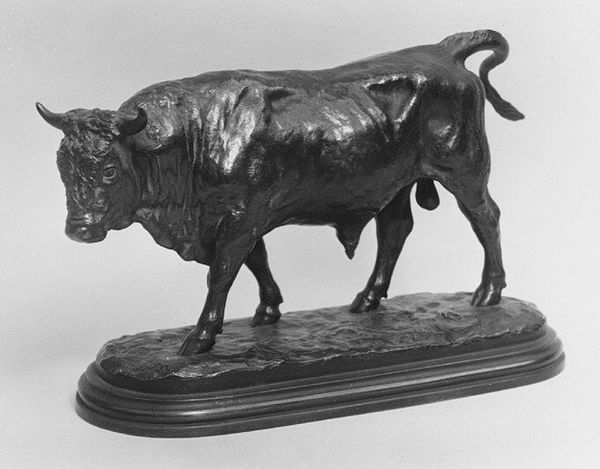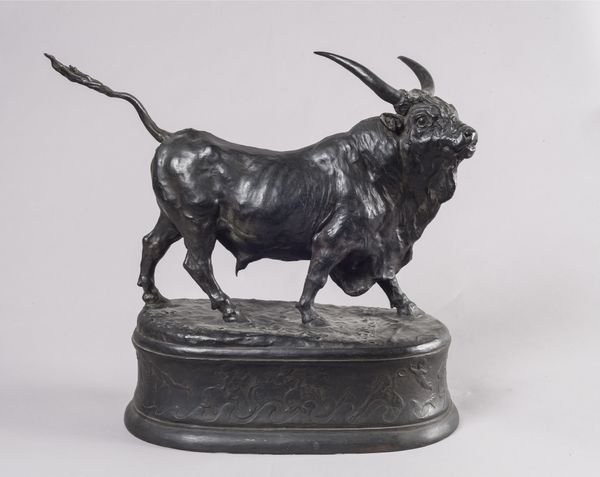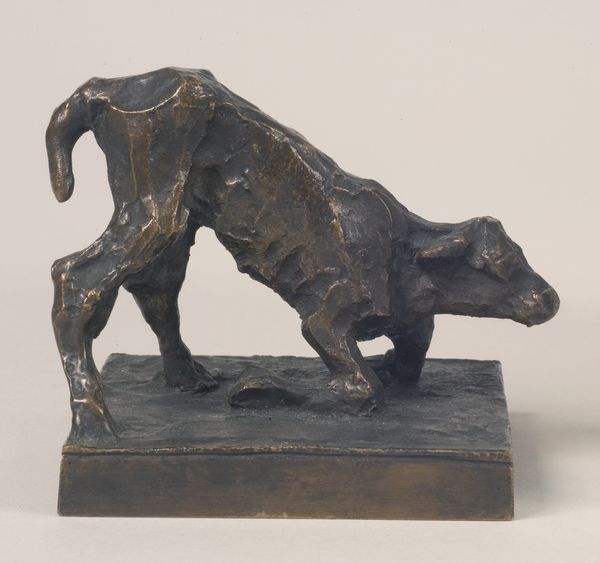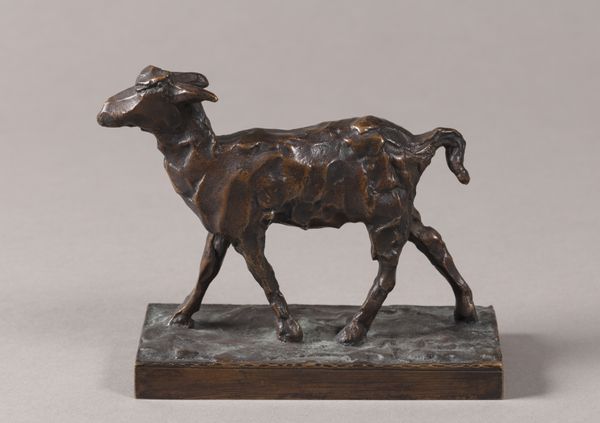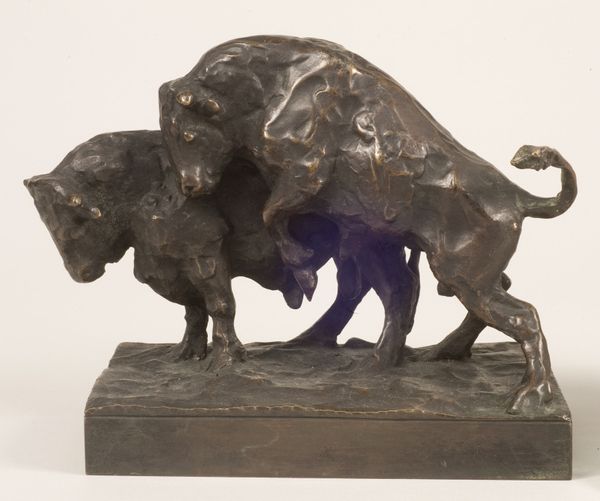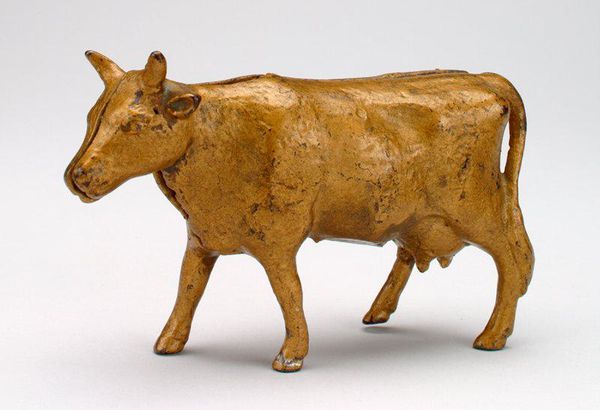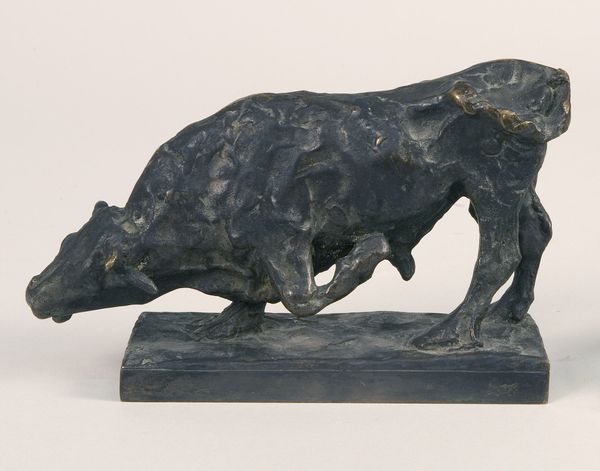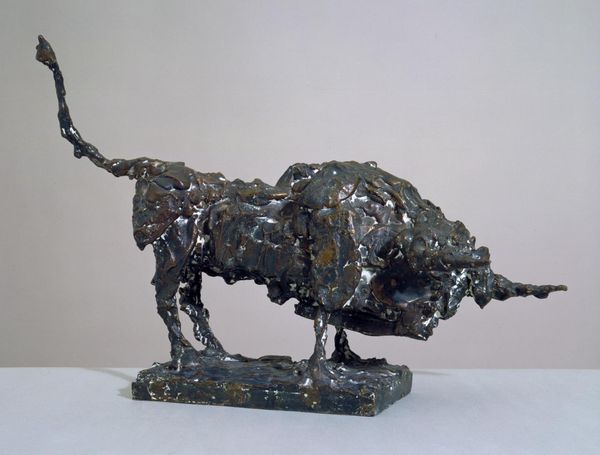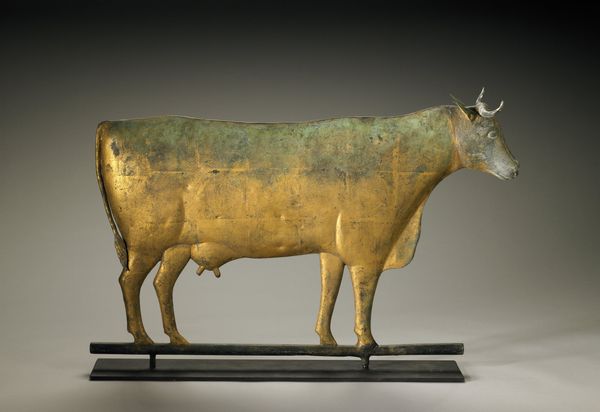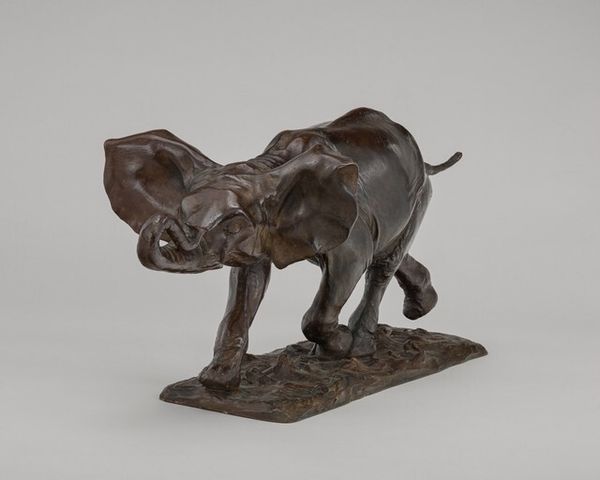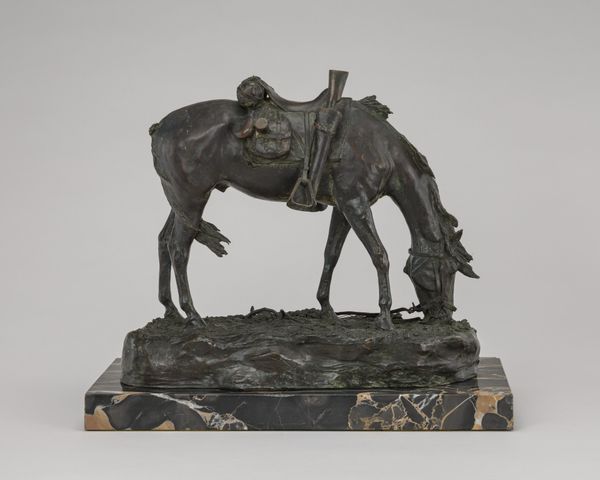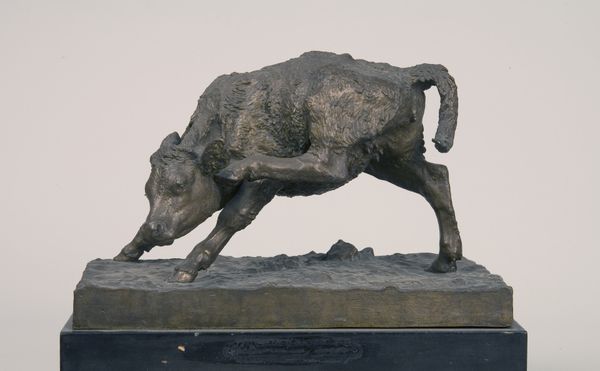
bronze, sculpture
#
animal
#
sculpture
#
bronze
#
sculpture
Dimensions: 41.5 cm (height) x 68.7 cm (width) x 20 cm (depth) (Netto)
Editor: We’re looking at Anne Marie Carl Nielsen’s “Standing Bull” from 1896, rendered in bronze and located in the SMK. I’m immediately struck by its solidity; it feels both powerful and grounded. What's your take? Curator: Well, consider the choice of bronze. Its materiality speaks to labor, both the artist’s and the foundry workers'. Bronze, from extraction to casting, is embedded in a system of production. Does this rendering of a powerful animal reflect social power structures of the time? Editor: That’s an interesting point; the bronze-casting process itself becomes part of the narrative. The process of molding the bull using such raw materials elevates it from just a work of art to an artifact loaded with cultural information. Curator: Precisely. And the context! Agriculture was evolving in the late 19th century. What role did cattle play in the economy and labor practices of that period, and how does this sculpture reflect or challenge those systems? Think of the bull not just as an animal, but as a commodity, a symbol of wealth and sustenance shaped by human intervention. Editor: So you're saying that seeing the bull depicted in bronze shifts its meaning from the animal to a representation of economic power? And how agriculture and industry at the time relate to it? I hadn’t considered that before! I appreciate this take! Curator: Indeed. Consider the sculpture as the product of particular labor arrangements, reflective of its time. Appreciating art involves an examination of materiality and means of production. Editor: Looking at the work, the material processes of sculpting it now open my eyes to an entirely new side. Thank you!
Comments
statensmuseumforkunst almost 2 years ago
⋮
The small animal sculptures executed by Anne Marie Carl Nielsen may not loom large, but they have a liveliness and spontaneity that still impresses. Indeed, the French sculptor Auguste Rodin was taken with them when he saw them in Paris. Going against her family’s counsel, Anne Marie went to Copenhagen from the provinces and was admitted to the women’s art school there. She had her debut at the Charlottenborg exhibition at the tender age of 23 and later married the composer Carl Nielsen. A housekeeper tended to their children, allowing Anne Marie to work with her art. She did so in spite of Carl’s great need for support and praise, and the couple experienced several rifts. She successfully did several monumental works – the horse’s head is one example – and won acclaim on a par with her male colleagues.
Join the conversation
Join millions of artists and users on Artera today and experience the ultimate creative platform.

